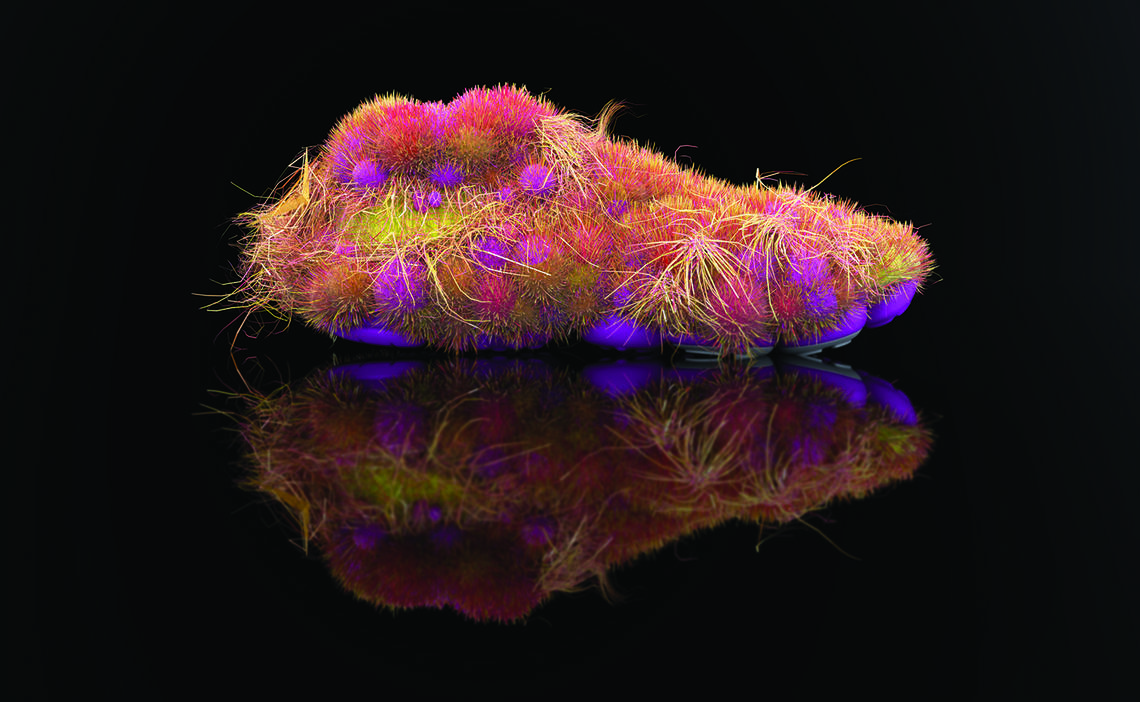March 16, 2020
Architect and educator tells students to become 'mad scientists' to elevate their work

Hernán Diaz Alonso encourages architects to become “mad scientists,” merging art and physics and working on fictional projects to create new forms of architecture. The Los Angeles-based director of SCI-Arc, principal of architecture firm HDA-X and author brought his message of “progressive disruption” to a recent Design Matters, a thought-provoking lecture series presented by the School of Architecture, Planning, and Landscape (SAPL).
“Progressive disruption is an attitude that can take architecture at its best to fuel imagination and to allow architecture to evolve through disruption, not innovation,” Alonso told the SAPL students, faculty and others at the February event. It’s not disrupting the status quo for the sake of disruption but as a method to push ideas forward. New attitudes can bring new discoveries, and digital technologies provide a whole new opportunity to explore, he says.
Alonso’s work spans multiple disciplines from urban environments to product design and fashion including footwear, wearable technology and health-care products such as face masks and oxygen vests. A lot of his projects are fictional and never move past the prototyping phase.
"What's the point of researching and exploring if nothing is truly realized, nothing formally materializes?" he asks. The answer, he says, is that innovation isn't about solving our known problems. He argues we need to break away from the “constraints of reality” and current knowledge to learn outside the bounds of codes, policies, government control, funding, and even physics.
Students enjoyed hearing his perspective. “He’s pursuing something he’s truly passionate about and exploring it to its fullest extent, knowing that he can’t solve the world’s problems,” says Tania Castillo, who will graduate with a Master of Architecture this year.
“Alonso’s demonstrating that you can make a career out of exploration,” says Julieta Alva, BA’19.
“He has an ability to think disruptively in his creative processes, yet nothing that he does is disruptive to the order and structure of society,” says Mike Gross, who is studying architecture at SAPL.

One of Hernán Diaz Alonso's designs, Hairy Shoe.
Courtesy Sci-Arc
Alonso told the students that academia’s role isn't to innovate something that already works, but rather to question the processes that surround it and break it down into something new. “In architecture can we explore alternative ways of inhabiting, find new tectonics — ways to bring things together, new forms that speak to our new cultures and identities,” he says. While people like to feel safe and stay with what they know and understand, to be an innovator, you must step outside of those comfortable boundaries and the usual way of working.
The design process is an opportunity to be creative and have fun: “The work you put into creating, exploring and imagining opens so many possibilities of what could be,” says Alonso. “Our initial ideas are only the beginning, just the surface of something entirely new.”
Alexander Mayhew is an M1 student in the Master of Architecture program at the School of Architecture, Planning and Landscape.







